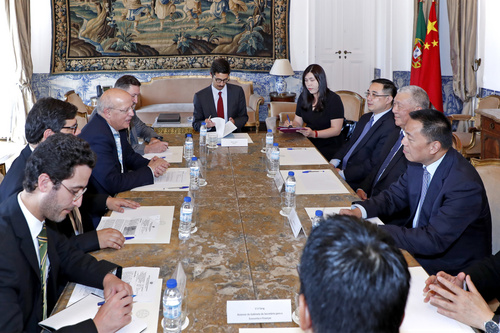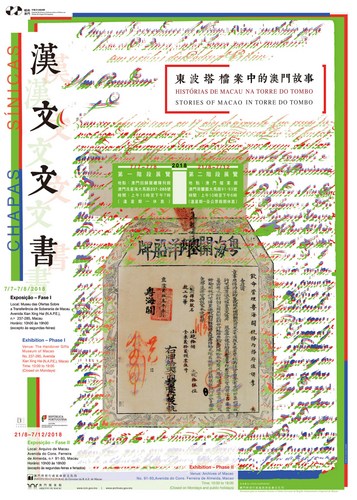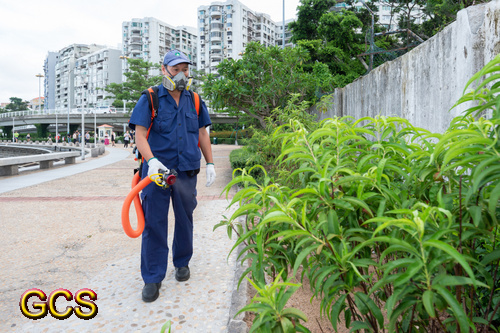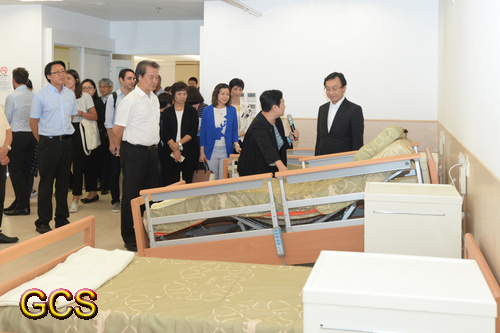Macao SAR Government Portal
News
Edmund Ho and Leong Vai Tac meet with the Minister of Foreign Affairs of the Portuguese Republic in Lisbon
The Vice Chairman of the National Committee of the Chinese People’s Political Consultative Conference (CPPCC) and former Chief Executive of the Macao Special Administrative Region (SAR), Mr Edmund Ho Hau Wah, and the Secretary for Economy and Finance, Mr Leong Vai Tac, met with the Minister of Foreign Affairs of the Portuguese Republic, Mr Augusto Santos Silva, in Lisbon on 19 June, while visiting Portugal for an event to mark the 15th anniversary of the establishment of the Forum for Economic and Trade Cooperation between China and Portuguese-speaking Countries, a body also known as Forum Macao. Both parties exchanged views on enhancing economic and trade, tourism, culture, and education cooperation between Macao and Portugal.
…
Consumer price index (CPI) for May 2018
Information from the Statistics and Census Service (DSEC) indicated that the Composite CPI in May 2018 increased by 2.97% year-on-year to 112.44, slightly higher than the 2.88% growth in April 2018. The increment in May was attributable to dearer charges for eating out, higher rentals for dwellings and parking meter rates, as well as rising prices of gasoline and women’s clothing & footwear.
…
GGCT withdraws Travel Alert for the Albay Province of the Philippines
Given that the situation in the Albay Province of the Philippines has attenuated, the Tourism Crisis Management Office (GGCT) withdrew the Travel Alert for that destination.
…
The Archives of Macao and the National Archive of Torre do Tombo of Portugal jointly present exhibition “Chapas Sínicas — Stories of Macao in Torre do Tombo”
The inaugural edition of “Encounter in Macao — Arts and Cultural Festival between China and Portuguese-speaking Countries” organized by the Cultural Affairs Bureau of Macao will feature a variety of events and activities. Exhibition “Chapas Sínicas —— Stories of Macao in Torre do Tombo” jointly presented by the Archives of Macao and the National Archives of Torre do Tombo of Portugal will run in two phases, the first from 7 July to 7 August 2018, and the second from 21 August to 7 December 2018. The exhibition's opening ceremony will start at 17:00 on 6 July 2018 at the Handover Gifts Museum of Macao. In connection with the exhibition, a lecture series is scheduled at 15:00 on 8 July. Members of the public are welcome to attend.
…
Consumer Council released latest ‘Supermarket price survey’ in Taipa and Coloane area
Consumer Council conducted its latest ‘Supermarket price survey’ on 20 June for the implementation of Section 2b), Article 10, Law 4/95/M of 12 June. Surveyed locations included 11 supermarkets in Taipa and Coloane area.
…
UM holds UAUC joint meeting; Chui hopes UM redoubles effort to train high-calibre professionals in various fields
The University of Macau (UM) yesterday (19 June) held the Joint Meeting of the University Assembly (UA) and University Council (UC) for the 2017/2018 academic year in its Ho Yin Conference Hall. Chui Sai On, chief executive of the Macao SAR, chancellor of UM, and chair of the UA, presided over the meeting. Chui said that the Macao SAR government accords great importance to education and hopes UM will redouble its effort to produce high-calibre professionals in various fields.
…
Business climate survey on restaurants & similar establishments and retail trade for April 2018
Information from the Statistics and Census Service (DSEC) indicated that 48% of the interviewed restaurants & similar establishments reported a year-on-year rise in receipts in April, down by 12 percentage points from March. The corresponding proportions of Japanese & Korean Restaurants (47%) and Chinese Restaurants (59%) reduced by 27 and 23 percentage points respectively. Meanwhile, the share of interviewed establishments recording a year-on-year decline in receipts went up by 3 percentage points over March to 22%.
…
Macao Orchestra celebrates its 35th Anniversary Tickets for new concert season on sale from 1 July
The Macao Orchestra (OM, from the Portuguese acronym), under the auspices of the Cultural Affairs Bureau, will begin its 2018-19 Concert Season, themed “Music Gala 35: Music Fills the City”, in September. In celebration of its 35th anniversary, a number of prominent musicians were invited to bring music aficionados a variety of excellent performances. As part of this concert season, a new “Young Audience Programme” will be launched, offering young music aficionados a series of educational and outreach activities, as well as a special edition of the Macau Pass to spread classical music everywhere. Furthermore, the OM has commissioned outstanding contemporary Chinese composer Wang Xilin a new work for its 35th anniversary, aiming to celebrate the special occasion with music aficionados. Tickets for the new concert season will be on sale at the Macau Ticketing Network from 1 July, and an early bird discount of 40% will be available, subject to certain criteria, between 1 July and 31 August.
…





